Skeleton: types and subtleties of cultivation
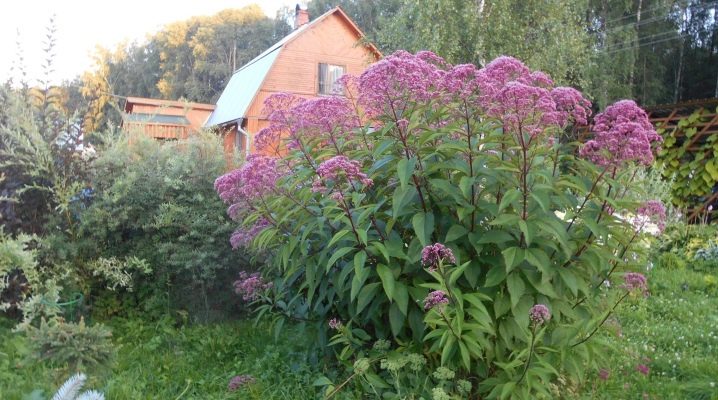
Sapstone is a perennial plant that is used not only for decorative purposes, but also as a medicine. There are about 20 other similar wildflowers that resemble it, but this plant is relatively easy to distinguish from others if you know its description.
Description
In order to understand that it is the steep tree in front of you, you should pay attention to the base of the leaves, which is wrapped around the stem. From the side it seems that the stem is breaking through the leaf. This is a perforated arrangement of leaves.
It grows in the humid environment of North American swamps and has a long history of use. Although it is still occasionally grown and harvested as a medicine, it is increasingly being used by gardeners for landscaping.
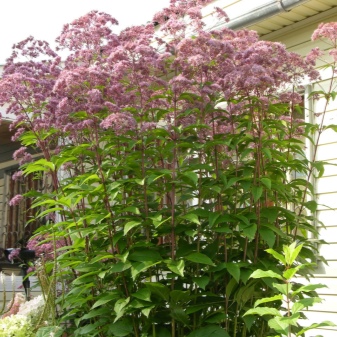
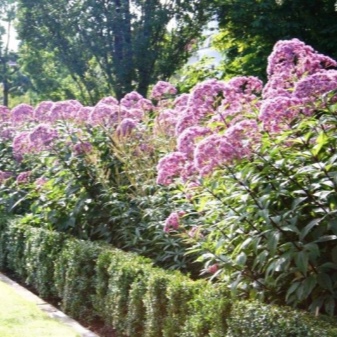
Bone sap belongs to the Astrov family. The bushes of the plant can reach a height of several tens of centimeters to two meters or even higher. Its leaves grow on opposite sides of the stem and join at the base. The flowers are very small, tubular, depending on the variety, they can differ in shade and be white or pink in different shades. They appear in flat clusters at the tops of the shoots towards the end of the last month of summer. Other names: Joe Pie weed, White crayfish necks, Mist flower.
Flowering time usually occurs in late summer or early autumn. Most often in early August.
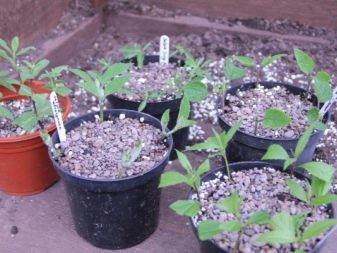
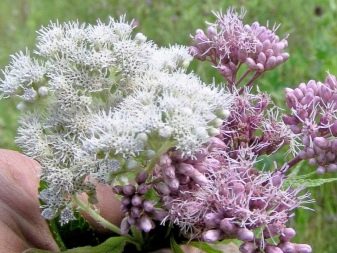
It is quite easy to grow the plant, no special care is required. The best habitat is swampy ground and along the streams. Increasingly, the flower is used as a supplement in flower beds, however, it requires frequent watering. The plant can be grown from seed, but then there will be no flowers for the first three years..
The bush can withstand frequent flooding. Planting is best done in spring or autumn in a place with high light. Bone sap is widespread in the eastern half of the United States and Canada, Texas, Oklahoma. These are always straight upward stems.
When it's time to bloom, it's hard to miss because of the vibrant colors. This hardy species can tolerate dry soil, but not for long. It is a boon for pollinators, it grows and blooms from year to year.
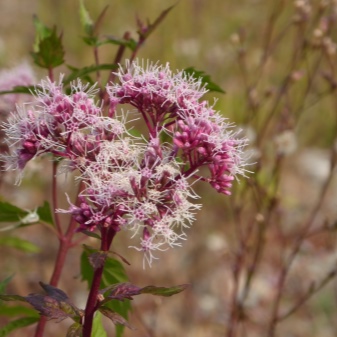
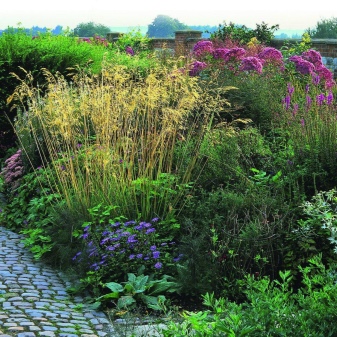
The vast majority of tall plants are female. In fact, only populations found in the Ozarks have been found to be sexually viable. This is quite a fascinating fact considering how widespread this species is in North America. A careful study of the genome showed that the sex plants were genetically diploid. They produce sterile male parts that either severely deform the pollen grains or do not produce pollen at all.
Populations of high varieties do not reproduce vegetatively, they need to be cross-pollinated in order to obtain seeds.
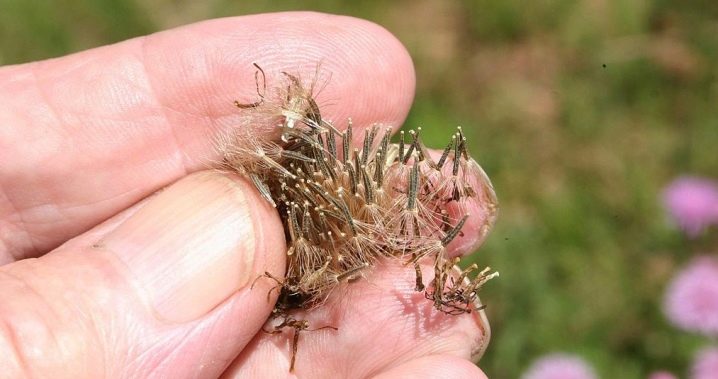
This is not the case for female plant groups that create seeds on their own, without any pollen. Such material is essentially clones of the mother bush. Asexual reproduction is quite beneficial for this plant. The offspring obtained from these seeds have the same genetic makeup as the mothers, and by their nature are well adapted to any conditions in which their parents grew up. Thus, the flower can easily colonize a territory and expand its presence.
Types and varieties
In nature, there is not only a white stethoscope, which is its advantage, since you can choose several attractive options so that they decorate the flower bed.

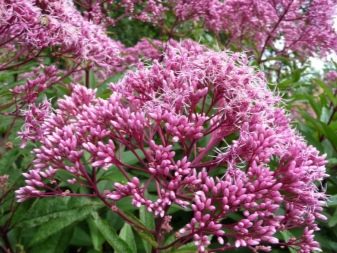
Spotted
This North American lover enjoys coastal areas, including forests, grasslands, and thickets. The bush in adulthood becomes quite powerful and can reach a height of 1.8 meters. The leaves are elongated, whorled on the stem.
This spine is presented in several types.
- Album - a plant up to 2 meters high. It has white inflorescences characterized by a slightly gray tint.
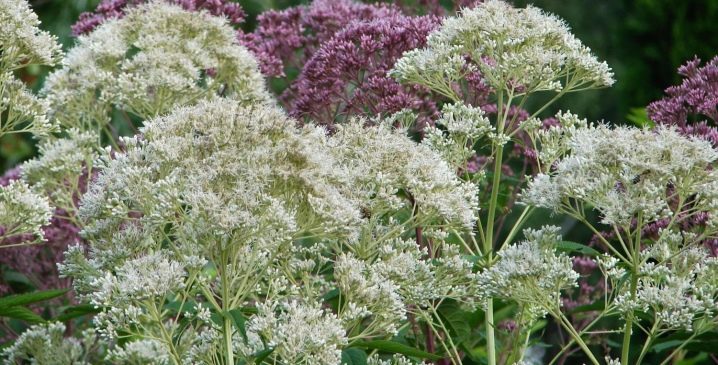
- "Atropurpureum" - it has bright red stems, the maximum height of the bush is 2 meters. Flowers delight with pink-purple color, which is popular in horticulture.
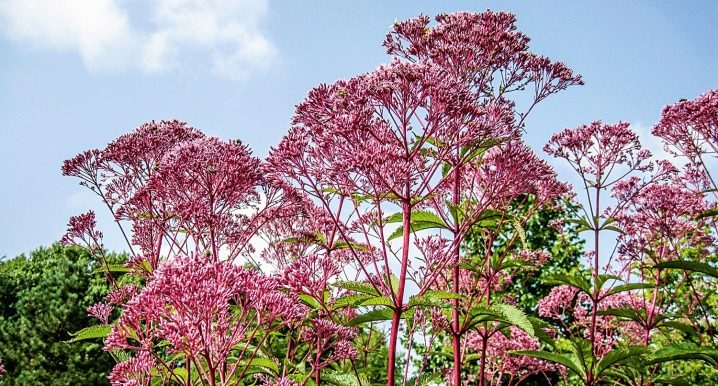
- Borterd Bride - taller than most of their relatives by forty centimeters, the flowers are very beautiful, snow-white, are evenly distributed throughout the plant.

- Gateway - it stands out with a red shade of stems, but its height, as a rule, is no more than 1.5 meters. The inflorescences form dome-shaped ligaments, a shade of lilac-pink.
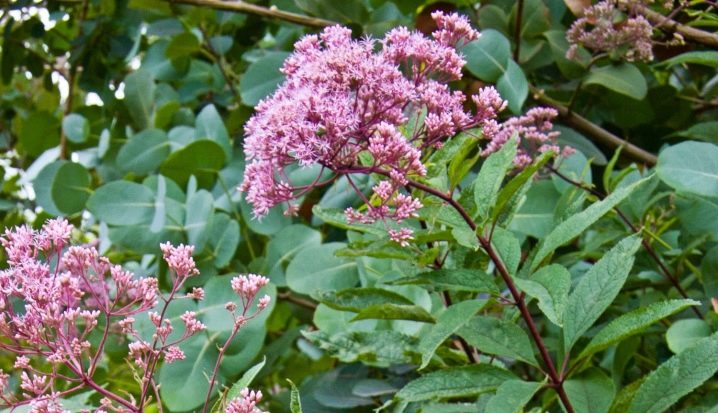
- Big Amrellaz - This plant has pinkish-gray flowers that form into large, dense inflorescences on red shoots. Height is about 1.8 meters.
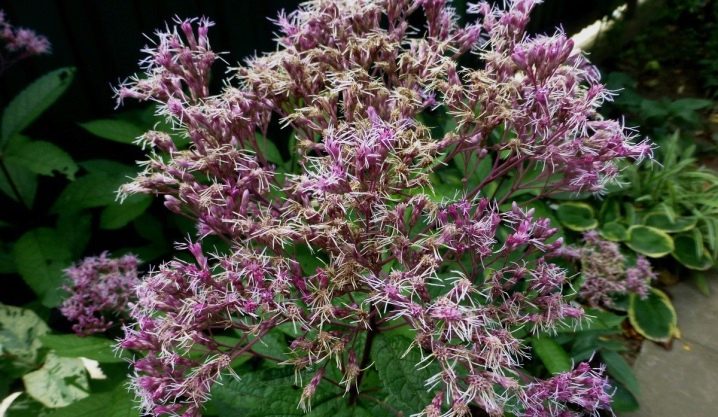
- "Karin" - will delight during the flowering period with light lavender flowers, which flaunt at a height of 2 meters.
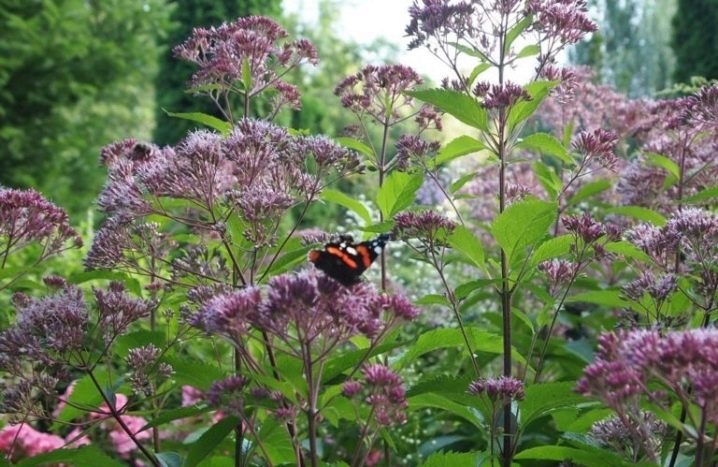
- "Phantom" - a small plant, just over 1 meter in height, with dark shoots. Flowers in full bloom turn gray-lilac.
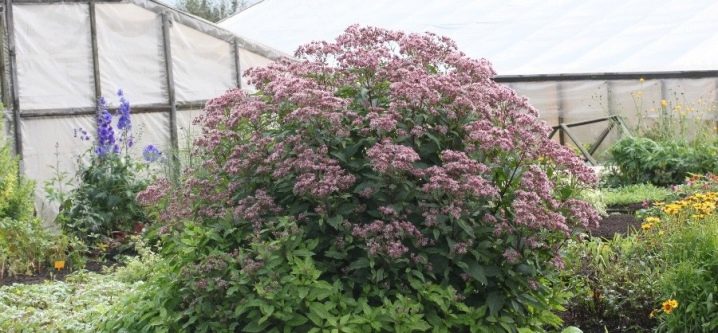
- "Purple Bash" - inflorescences are smaller than those of Gateway, but the same pink-lilac shade. The shrub grows no more than 1.5 meters.
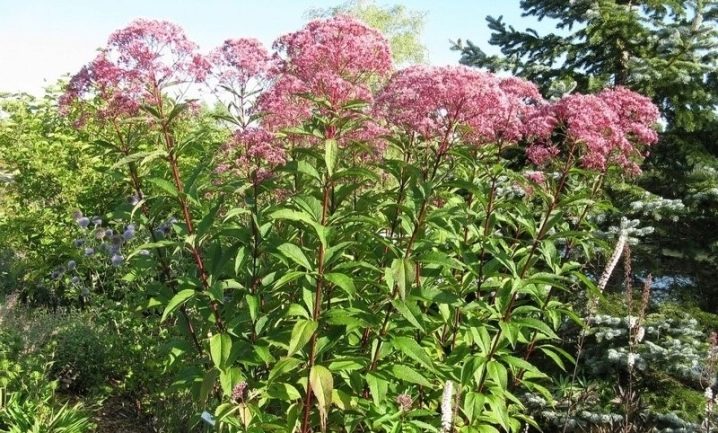
- Baby joe - forms small flowers, which can be not only completely white, but also with a lilac tint or even blue (but less often). The foliage is dark green, the bushes are spreading, the height is up to 2 meters.
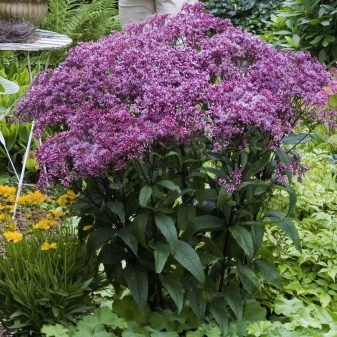
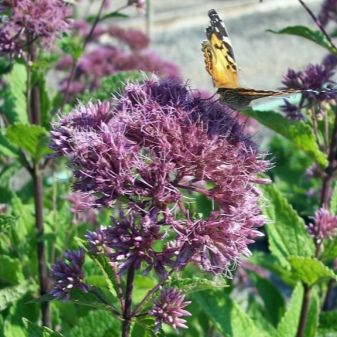
Purple
The described variety grows in North America. This shrub is never more than 1.5 meters, the stems are green with a blue tint. Small hairs can be seen on the foliage. Their shape is oval-lanceolate, slightly sharpened upward, there are small teeth along the edge. Inflorescences are formed large, consist of small baskets.
The colors range from pink to purple-purple.
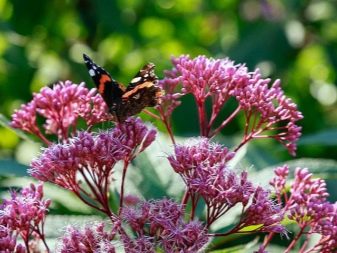
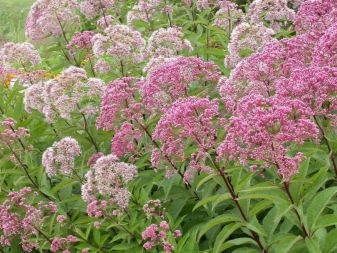
Of the varieties of this species, "Little Red" is especially distinguished. with compact bushes up to 1 meter high and wine-pink inflorescences. Modern gardeners are especially fond of Little Joe, whose shoots can grow up to a maximum of 1 meter up. The flowers are smoky pink.
Hemp
This variety can be found in nature, but only in Europe, near streams, river beds and in swampy areas. The height of the stems is from 20 centimeters to 1 meter. Leaves are short-petiolate, have small denticles along the edge. The inflorescences have a pink tint.
Several species of this variety are used by gardeners as an ornamental plant.
- "Plenum" - shrub up to 1.6 meters in height. Differs in long flowering with terry baskets.
- Album - a species with white flowers.
- "Variegatum" - a low-growing plant with shoots no more than 75 centimeters. A distinctive feature is considered to be a white line encircling the leaf along the edge. The flowers are deep pink.

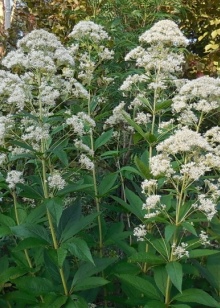

Wrinkly
This species has a difference - its leaves are oval and opposite. The edge, like most other varieties, has a carved edge. Among the best varieties, one can single out "Chocolate", which will delight you with white inflorescences and excellent frost resistance. The leaves are covered with gloss, a shade of bronze brown. When the leaves fully open, they take on a slightly purple tint.
Another no less popular variety is "Braunlaub", which has a height of 150 centimeters and the foliage is brown (while it is young).


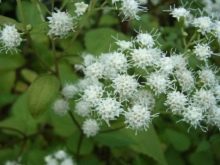
Landing features
When planted in open beds, the steep shows tiny flowers that gather in bunches in late summer or early fall.
Most often it can be found in fields and meadows, but it is not difficult to grow a flower in the garden.
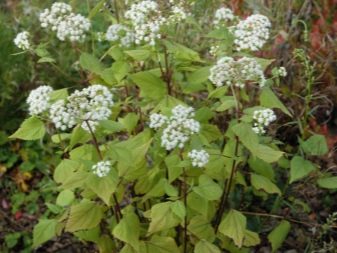
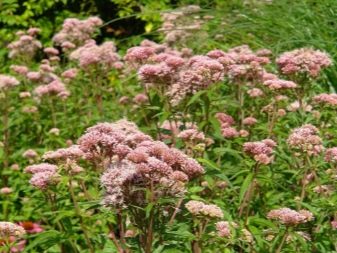
The seeds can be germinated indoors or outdoors after the last frost has hit. Growing indoors has several benefits. Being very tiny in size, the seeds will not be washed away by rain or eaten by birds. It is easier for the grower to maintain the required soil moisture level when they enter the germination stage.
Stem tree will grow well in partial shade, as well as in a place where there is a lot of sunlight. The plants are quite tall, and its branches are up to 1 meter wide, so it is worth keeping a free space of about two meters between them. The shoots are strong and do not require trellis support. Watering once a week is sufficient, twice a week during dry periods.

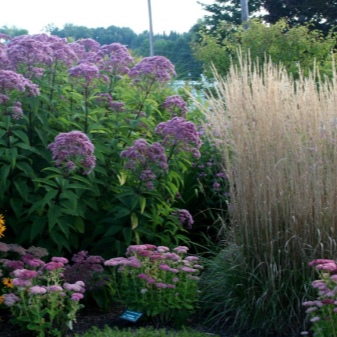
Planting time largely depends on what kind of planting material the gardener chose. If this is a rhizome, then all work is transferred to mid-spring, when there will definitely be no big frosts. There will be enough time during the warm period for the bush to take root and prepare for wintering. If seedlings are planted, then this is exclusively the beginning of summer.when the air temperature is already warm around the clock. The seeds are planted in early spring.
When choosing a suitable place, it is better to stay where there is enough sun during the day, since in the absence of it, the shrub may stop blooming.

There must be a properly done drainage in the ground. In addition, the soil is additionally fertilized. If it is sandy soil, which is very poor in the presence of beneficial trace elements, manure is used. Before planting, the territory is dug up and stones, if any, are removed. They prevent the roots from developing well, and as a result, the whole bush suffers.
You can use bone meal as an additional fertilizer. When planting several shrubs in the form of rhizomes, they are buried into the ground by at least 5 centimeters. It would be nice to do mulching using peat, humus or sawdust, which is laid on top. This method allows you to additionally provide good protection against moisture loss and weed germination.
The first watering is done more often, the main thing is to achieve rooting of the plant. Planting holes must also be prepared for planting seedlings.
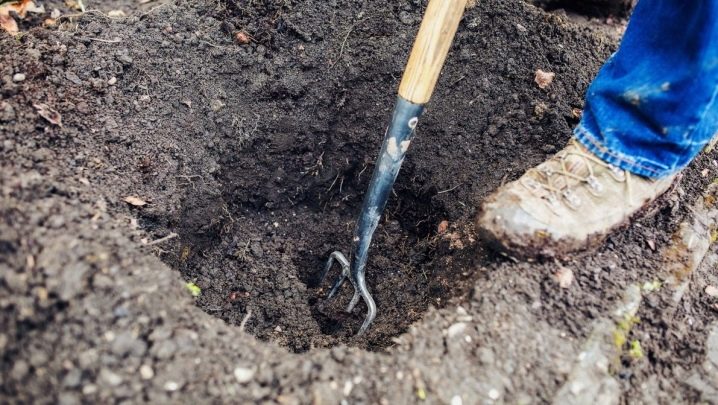
It is advisable to put fertilizer inside, since such seed is more capricious than a simple rhizome. You can use not only bone meal, but also ash or even humus. And you can have all three components in a ratio of 1: 3: 6. An adult stethoscope is a very frost-resistant plant that can withstand temperatures down to -25 ° C.
Subtleties of care
Plants should be cut to the ground at the end of flowering in the fall and separated every three years to allow the shrubs to regenerate. In general, it is not difficult to grow such a flower, it does not require careful care and is one of the most picky ones.
From care, you will need to regularly loosen the soil around and mulch it.

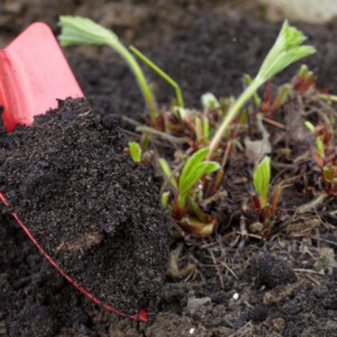
The immersion depth of the loosening tool should not be too great, otherwise the roots can be easily damaged. As for watering, the bushes are very fond of moisture, in their natural environment they try to grow where there is enough of it, so watering should be done on a regular basis. The plant will perfectly endure small periods of drought, but it is better not to allow this. With a well-prepared soil, there is no reason to be afraid of waterlogging.
As the main feeding, you can use a mineral complex, for example, "Zdraven" or nitroammofosku... After planting, they are introduced into the ground at the end of June or during the formation of inflorescences, and then in spring.
This shrub is not susceptible to pests or diseases, but this requires the gardener to choose the right propagation material.

The biggest problem a person can face are miners. These insects are very fond of foliage because it has thin skin. In case of defeat, nothing will help, any treatments are useless. You only have to remove the affected parts or whole bushes..
Reproduction methods
There are several breeding methods for the stethoscope, and each gardener decides which one to choose for himself individually. But they are all easy to learn.


Seeds
To grow a flower from seed indoors, use dampened soil and a container. Gently sprinkle the seeds on the surface of the moist soil and press down, but do not cover with a heavy layer of soil. Place the container on the south window as they require enough sunlight to germinate. Check the soil every 24 hours to keep it moderately moist. After the seeds germinate, they can be transplanted into open ground, but they do this already at the beginning of summer. It all takes about ten weeks before the seedlings are ready for planting.
Seeds can be planted in the fall directly into open ground. The soil should remain moist with an acidity of 5 to 6 pH. On the street, the germination process takes from one to three months at a temperature of about 13 degrees Celsius.
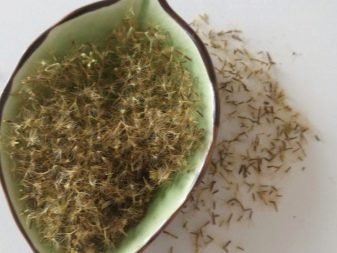
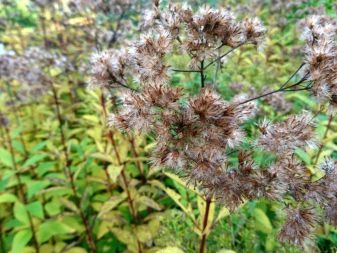
By dividing the bush
Only those plants that have been growing in one place for at least five years can be propagated in such a popular way. All work is carried out in the spring before the start of sap flow or in the fall. Experienced summer residents recommend the first option. In the spring, the phase of active growth begins, and therefore the plant quickly takes root.
The rhizome needs to be cut into so many parts that 3 growth buds remain on each.
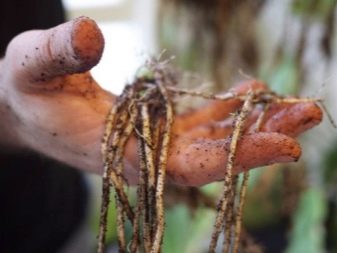
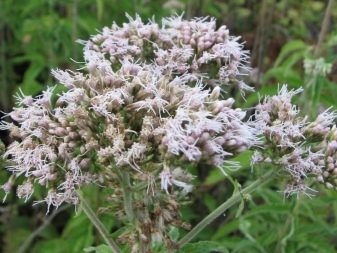
This amount is enough for further growth. All blanks are immediately immersed in the ground and the soil is well shed with water.
By kidneys
If you propagate the steep by the kidneys, then cuttings begin to be cut at the end of the first summer month. Root them in a greenhouse or use a greenhouse. For normal development, each cutting should have at least three buds, as in the previous version. The plant is transplanted into open ground at the end of summer. Gardeners rarely use this method, since it is the most laborious, but it allows you to get the highest quality planting material, and in large quantities.

Use in landscape design
In the suburbs of Moscow, you can often find a steeple in the garden. Its such popularity has arisen due to the abundant and very bright flowering. Despite the fact that the flowers are very small individually, they gather in large inflorescences and delight with their beauty. Decorative properties make it possible to widely use the shrub in landscape design.
Often, the slope is planted in open ground in whole groups, since it allows you to hide a fence or other buildings.
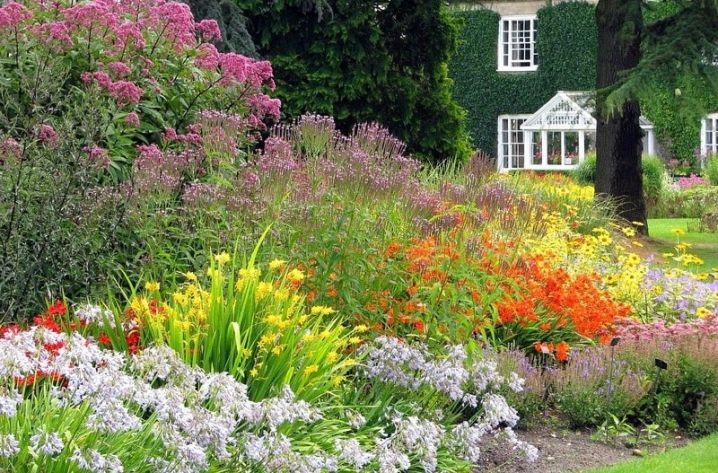
Its spreading shrubs visually increase the space and go well with most other plants.
Among the most common neighbors:
- echinacea;
- buzulnik;
- black cohosh;
- astilbay;
- rudbeckia.
Large inflorescences are difficult to miss, even from a great distance. Moreover, the shrub is tolerant of urban pollution and can easily multiply.
However, as a cultivated variety, it may be subject to certain restrictions or prohibitions on distribution. This should be borne in mind.
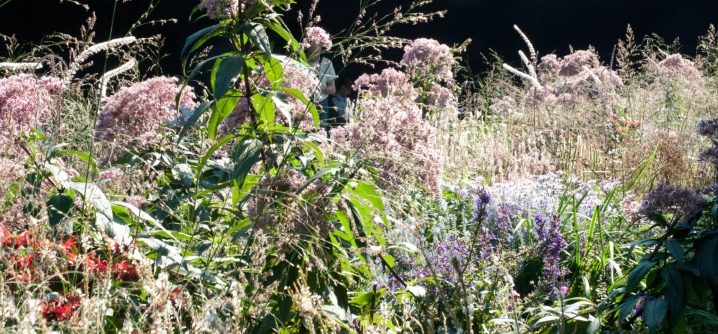
The flowers are attractive in large groups, flowering profusely until the end of autumn. The shrub looks especially good in a large cluster at the back of the site border. Its strong stems never sag, so the steep can be used to support the weak stems of plants such as sky blue aster.
The described plant prefers humid conditions, but feels great and pleases with color in medium-moist soil, in a place where the sun shines most of the time.If you give it a lot of space, it will gradually fill the available area, so you need to constantly monitor the reproduction.
Plants can be quite tall and lanky, but they can be reduced in early spring.
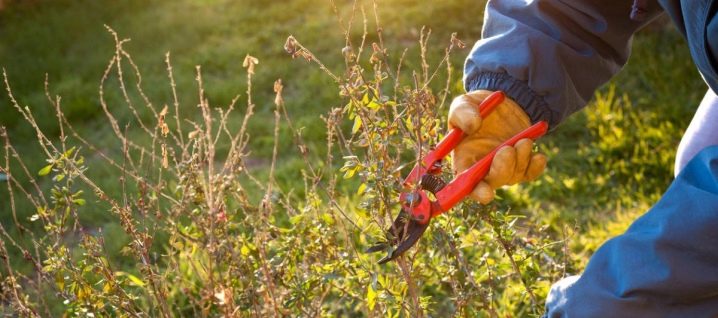
The bristle plant is often cultivated as a single plant, but it is still more often used by designers as a background and is planted in the background. It will also look good on a green lawn, along the edge of an artificially created reservoir or even a pool. Tall bushes covered with snow become a good decoration of the garden.
Useful tips for growing stethosis are in the next video.
































































































The comment was sent successfully.